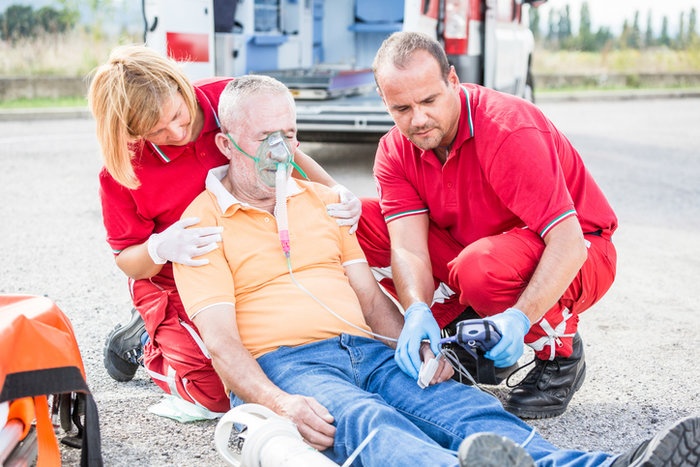
You are called to the nursing home to treat a “patient choking.” Upon arrival, you are rushed to the room of an elderly man who has suffered three previous strokes, resulting in limited mobility and significant speech impairment. Fortunately, the patient is no longer choking. Swift action on the part of the staff prevented an airway obstruction, and the patient is now resting comfortably. But is he truly out of danger?
Aspiration Pneumonia: A Dangerous Health Risk
Elderly patients face numerous health issues. Their hearts may no longer pump efficiently, their blood pressure may be too high or too low, they have trouble regulating body temperature and blood glucose, and their bones and muscles tend toward atrophy. However, one of the most dangerous health risks that the elderly may encounter is aspiration pneumonia.
Signs and Symptoms of Aspiration Pneumonia
Aspiration pneumonia disproportionately affects the elderly, but it can occur at any age and is caused by bacteria entering the lungs, typically via inhaled oral or gastric juices, it can lead to inflammation of lung tissue, reduced oxygen exchange, and death. Some of the signs and symptoms are:
- Chest pain
- Coughing up foul-smelling, greenish or dark phlegm (sputum), or phlegm that contains pus or blood
- Fatigue
- Fever
- Shortness of breath
- Wheezing
- Breath odor
- Excessive sweating
- Problems swallowing
- Confusion
Risk Factors for Aspiration
Everyone is at risk because aspiration can occur at any age. Some of the risk factors are:
- Being less alert because of medicines, illness, surgery, or other reasons
- Coma
- Drinking large amounts of alcohol
- Receiving medicine to put you into a deep sleep for surgery (general anesthesia)
- Old age
- Poor gag reflex in people who are not alert (unconscious or semi-conscious) after a stroke or brain injury
- Problems swallowing
It’s this last risk factor that readily affects the elderly because many older individuals have suffered strokes, which can reduce the ability to effectively swallow. Combined with limited mobility and reduced cognition, the opportunity for aspiration increases significantly as we age, resulting in pneumonia, the need for ventilator support, and an increased risk of further infection. It’s a slippery slope with potentially fatal consequences.
How to Prevent Aspiration Pneumonia
So how do we prevent aspiration pneumonia? The first step is to be aware of the threat. Whether you’re a paramedic treating an unconscious patient from an overdose or a nurse tending to patients at a rehab facility, you must remain vigilant against the threat of aspiration to prevent pneumonia. One of the most effective treatments is good oral suctioning.
Suction Is Key
Suctioning is a vital step in preventing aspiration. Effective suctioning keeps oral and gastric juices from entering the trachea, where they can be inhaled during respiration or forced deeper into the lungs during assisted ventilation. Here are a few reminders when it comes to suctioning your patients:
- Keep the suction unit handy—it’s no good to you if it’s not on hand.
- Check the unit at the start of each shift—ensure your equipment is operational and ready to go.
- Clean the suction unit after each use—while it can save a life, it can also serve as a contaminant if not properly disinfected.
- Use proper technique—suction, like any lifesaving procedure, can be ineffective and downright dangerous if not properly utilized.
- Hyperoxygenate your patient before suctioning.
- Limit suction time to prevent desaturation.
- Suction with care to avoid damaging delicate oral tissues.
- Use properly-sized tips to prevent clogs and reduce suction time.
Aspiration pneumonia is a deadly threat but one that can be minimized through awareness, diligence, and the use of effective suctioning. So be vigilant and keep that portable suction unit handy. You never know when you will need it.
Editor's Note: This blog was originally published in January 2025. It has been re-published with additional up to date content.















